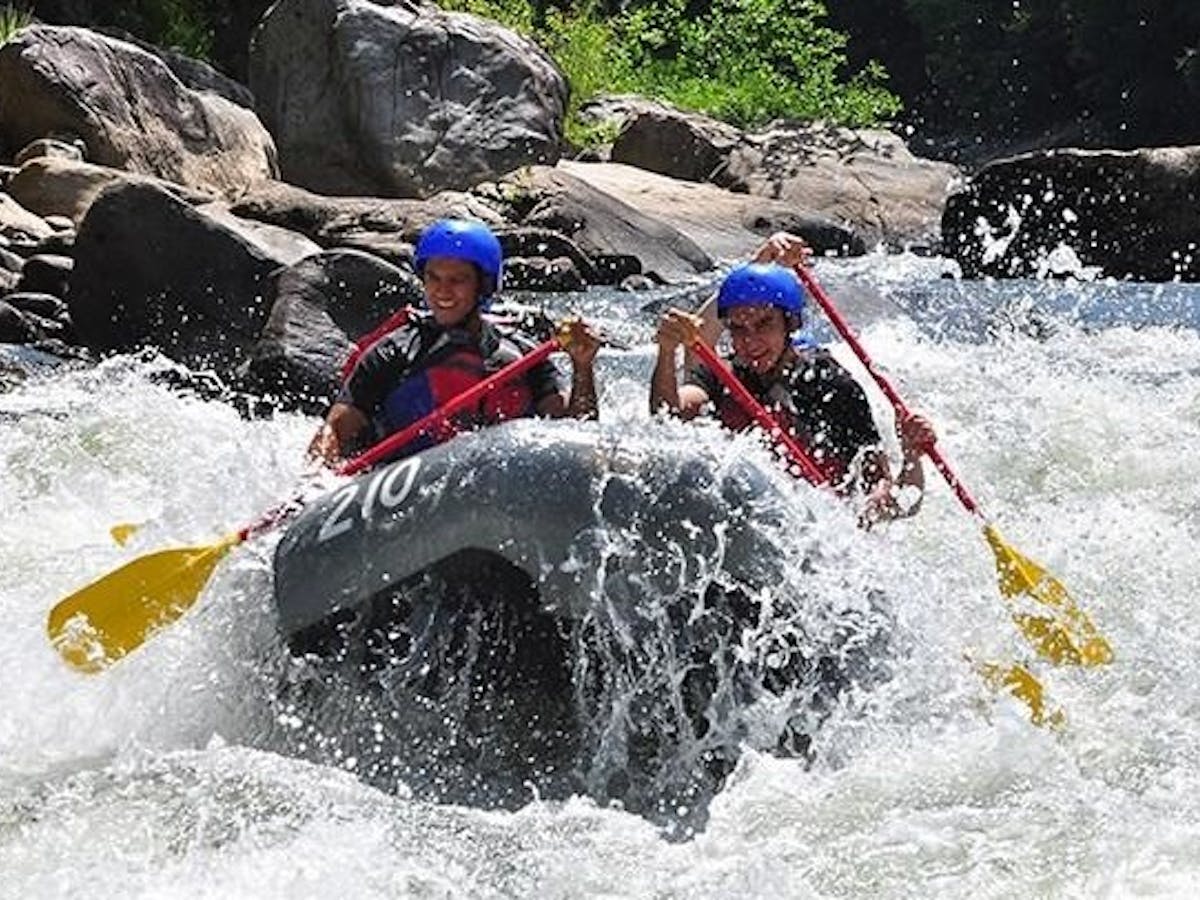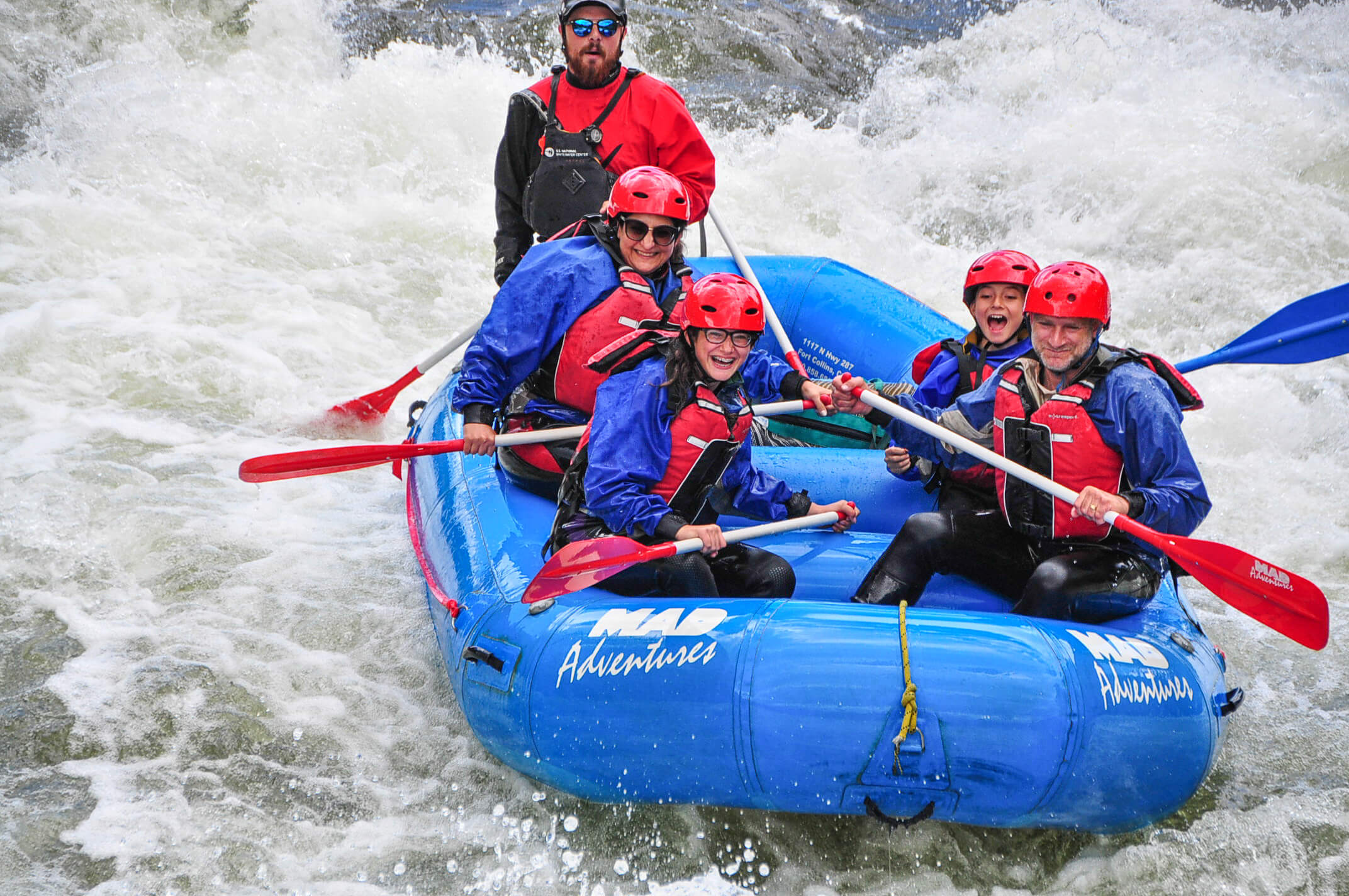Strategy Your Ultimate White Water Rafting Colorado Getaway
Strategy Your Ultimate White Water Rafting Colorado Getaway
Blog Article
Vital Skills for Water Rafting
Mastering the art of water rafting needs a mix of specific skills and understanding to browse the uncertain currents of rivers, making it a thrilling yet possibly hazardous activity. From comprehending the details of river characteristics to swiftwater rescue techniques and seamless team communication, the journey down the river demands a mix of experience and adaptability. White Water Rafting Colorado.
Paddling Techniques
Grasping effective paddling methods is critical for browsing water plethoras securely and effectively. Proper paddling not only propels the raft forward but also helps in maneuvering and steering via differing water problems. One basic method is the forward stroke, where paddlers dip the blade fully right into the water and draw it back along with the plethora to create propulsion. Timing and sychronisation are crucial to make sure that all paddlers are in sync, making best use of the power of each stroke.
Apart from the forward stroke, the draw stroke is crucial for making fast adjustments or drawing the boating closer to an object. By positioning the paddle blade perpendicular to the water's surface area and drawing the water towards the plethora, paddlers can successfully change the vessel's instructions. In addition, the backstroke acts as a useful tool for backing up or reducing down the raft when required.
River Reviewing
Efficient paddling strategies, such as the forward stroke and draw stroke, play an essential function in analyzing and navigating river currents, a skill referred to as river reading. River reading entails the capability to analyze the speed, deepness, and direction of the water flow to make enlightened decisions while browsing rapids. By understanding exactly how the water walks around challenges and via different channels, rafters can pick the best path to securely traverse the river.
One secret aspect of river reading is acknowledging numerous kinds of currents, consisting of eddies, hydraulics, and waves, and understanding exactly how they can influence the raft. Eddies, for instance, are locations where the water moves in a round motion, commonly giving opportunities for rest or calculated maneuvers. Waves can show the visibility of rocks or obstacles, needing fast changes in paddling technique. Hydraulics, commonly referred to as "holes," are areas where water recirculates back upstream, presenting possible threats to rafts.
Grasping the skill of river reading is vital for enjoyable and secure rafting experiences, enabling paddlers to browse tough waters with self-confidence and accuracy.

Swiftwater Rescue
Understanding swiftwater rescue methods is critical for water rafting enthusiasts to respond successfully in emergency situation scenarios on fast-flowing rivers. Swiftwater rescue involves a set of specialized skills and understanding focused on securely removing people from swift-moving water. One key element of swiftwater rescue is acknowledging the dangers existing in fast-flowing rivers, such as filters, undercut rocks, and solid currents, to intend and execute you could try here successful rescue operations.
Proper equipment is vital for swiftwater rescue, consisting of toss bags, rescue ropes, safety helmets, and individual flotation protection gadgets. Rafting enthusiasts should be proficient at using this devices in high-stress circumstances to guarantee the security of themselves and others. Furthermore, swiftwater rescue techniques frequently involve teamwork and coordination amongst rafters to implement intricate rescue maneuvers properly.
Learning swiftwater rescue is very suggested for individuals taking part in water rafting activities, as it outfits them with the essential abilities to manage emergencies swiftly and efficiently. White Water Rafting Colorado. By practicing and understanding swiftwater rescue techniques, water rafting fanatics can improve their safety and that of their fellow rafters on tough river expeditions
Team Interaction
Efficient teamwork in water rafting relies greatly on seamless interaction amongst employee to make sure collaborated and safe navigation through difficult river problems. Succinct and clear communication is important for the success of any rafting exploration. Staff member need to be able to properly communicate important details such as paddling commands, warning signals, and navigational guidelines.
In the typically unpredictable and hectic environment of river rafting, punctual and accurate communication can mean the difference in between a successful run and a possible disaster Homepage - White Water Rafting Colorado. Each group member plays an essential role in the general interaction process, whether it be paying attention diligently Learn More Here to the guide's directions, passing on information to other paddlers, or signaling for aid when needed
Establishing an usual language and interaction system before striking the water is essential. This guarantees that every person is on the same page and recognizes how to communicate successfully throughout the rafting journey. By fostering a culture of open communication and common regard, rafting teams can enhance their performance and security on the river.

Safety Methods
In the context of water rafting, the foundation of group communication developed during explorations is further strengthened through rigid adherence to safety procedures. Safety and security methods are paramount in guaranteeing the health of both rafters and guides during water rafting expeditions. One important security procedure is the correct wearing of individual flotation protection devices (PFDs) by every person on the plethora. PFDs are important in emergency situations to maintain participants afloat and supply buoyancy. In addition, rafters should be skilled in swiftwater rescue strategies and protocols in situation of somebody dropping overboard or if the raft tips over.
An additional secret safety protocol is the detailed rundown offered by overviews prior to embarking on a rafting journey. By purely adhering to these security methods, water rafting trips can be both safe and exhilarating for all participants included.
Conclusion
To conclude, understanding vital skills for water rafting is critical for a delightful and risk-free experience on the river. Paddling strategies, river reading, swiftwater rescue, group communication, and safety and security procedures are all essential elements that contribute to a successful rafting journey. By developing these abilities, rafters can navigate difficult waters with confidence and make sure the safety of themselves and their team participants.
Mastering the art of water rafting needs a combination of accurate abilities and knowledge to navigate the uncertain currents of rivers, making it a thrilling yet potentially harmful task. By placing the paddle blade vertical to the water's surface area and pulling the water towards the plethora, paddlers can effectively alter the vessel's instructions.Recognizing swiftwater rescue techniques is vital for water rafting enthusiasts to respond successfully in emergency situation situations on fast-flowing rivers.Effective team effort in water rafting counts heavily on smooth communication among team participants to make certain coordinated and safe navigation with tough river problems.In conclusion, mastering vital abilities for water rafting is critical for a pleasurable and risk-free experience on the river.
Report this page